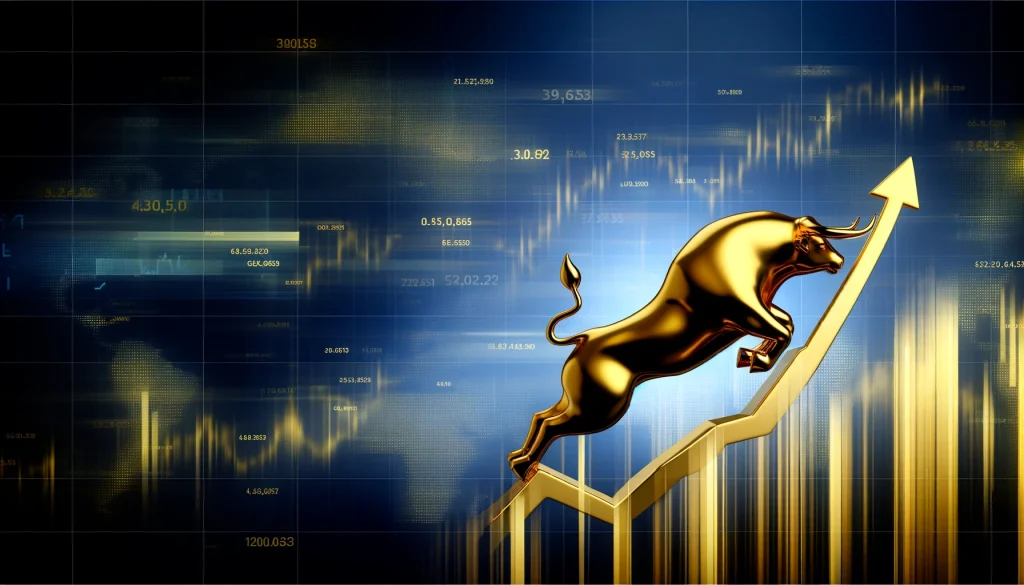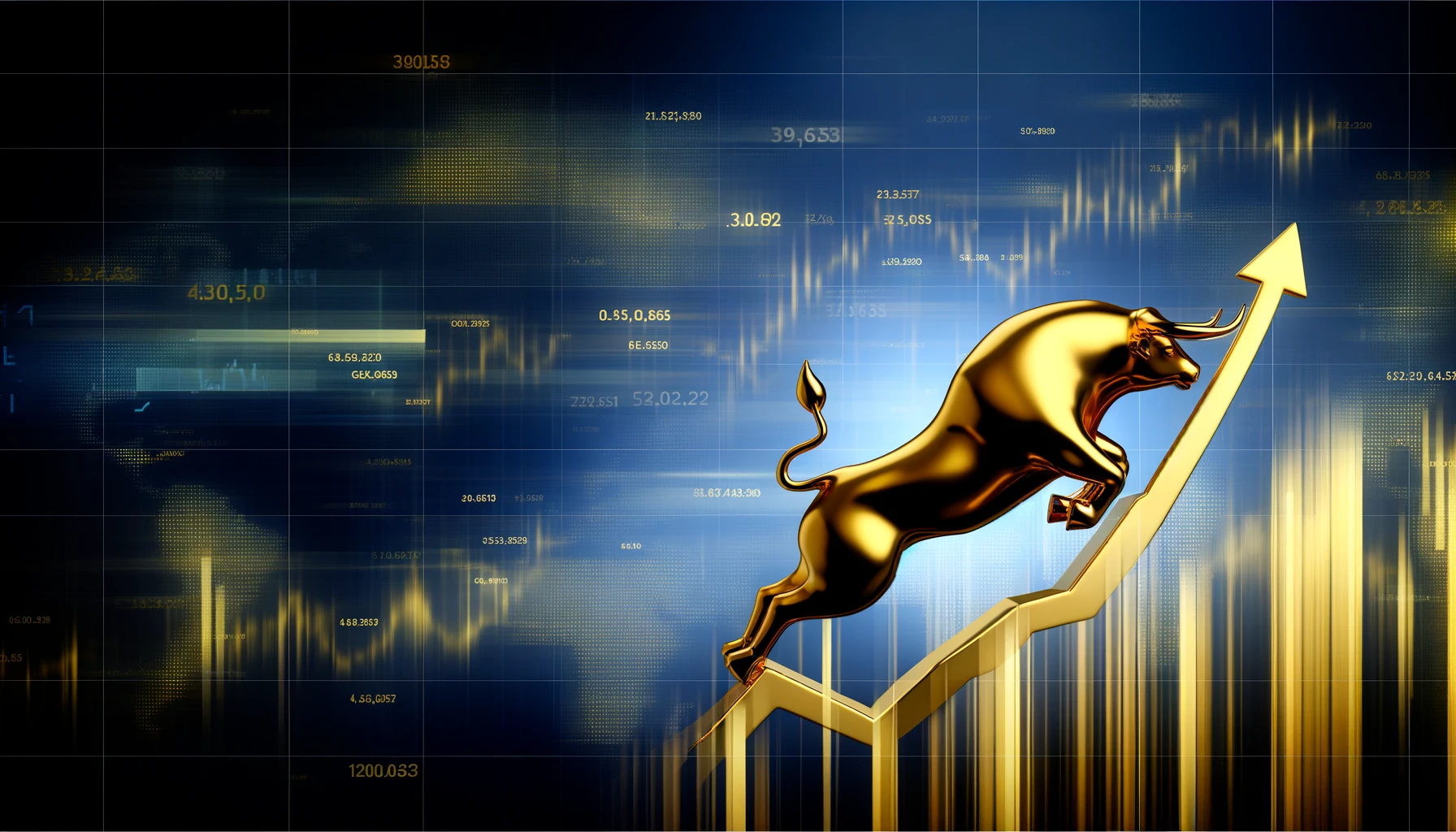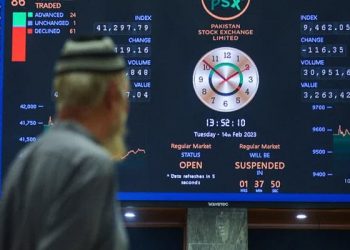Gold prices in Pakistan maintained stability on Thursday, marking no change following two consecutive sessions of decline. The price for 24-karat gold stood firm at Rs239,200 per tola.
In the previous week, 24-karat gold experienced a notable drop of Rs6,400 per tola, contributing to a cumulative loss of Rs14,200 per tola or 5.63% over the past fortnight.
According to the Karachi Sarafa Association, the current price for 24-karat gold per 10 grams is Rs205,075, while 22-karat gold is quoted at Rs187,986 per 10 grams.
Meanwhile, silver prices remained unchanged in the domestic market, with 24-karat silver holding steady at Rs2,620 per tola and Rs2,254.8 per 10 grams.
On the global scale, international spot gold hovered near $2,308.14 an ounce, registering a marginal decrease of 0.03% compared to the previous close.
GOLD PRICES SURGE AS CENTRAL BANKS HINT AT INTEREST RATE CUTS
The price of gold (XAU/USD) is rising on Thursday, trading at about $2,320, following the announcements of several major central banks to either lower interest rates or indicate that they would be more inclined to do so in the future. Since gold does not yield interest, lower interest rates lower the “opportunity cost” of owning it, increasing its allure as an investment.
Gold gains from geopolitical risk, which is further exacerbated by a deadlock in ceasefire negotiations between Israel and Hamas following Israel’s ongoing incursions into Rafah and reports of deteriorating conditions on the Ukrainian front
GOLD SURGES AS GLOBAL CENTRAL BANKS PAVE WAY FOR INTEREST RATE CUTS
In a significant shift, central banks across the globe are now embarking on a path of interest rate reductions, prompting a surge in gold prices. After years of maintaining relatively high interest rates to combat inflationary pressures, monetary authorities are recalibrating their policies to stimulate economic growth.
In a noteworthy move, the Riksbank in Sweden announced a 0.25% cut, lowering rates to 3.75% for the first time since 2016. Similarly, the Bank of England (BoE) narrowly opted to maintain current rates, with a vote of 7-2 against a cut, indicating a growing inclination among policymakers towards potential rate reductions.
The Swiss National Bank (SNB) led the charge in March by implementing interest rate cuts, signaling a proactive stance in monetary policy. Meanwhile, the Reserve Bank of Australia (RBA) surprised markets with a dovish hold at its latest policy meeting, hinting at potential future adjustments. Moreover, the European Central Bank (ECB) has strongly hinted at an upcoming interest rate cut in June, further bolstering expectations of global monetary easing.
These coordinated efforts by central banks to lower interest rates are fueling investor interest in safe-haven assets like gold, as lower rates diminish the opportunity cost of holding non-yielding assets. Consequently, gold prices are witnessing an upward trajectory as investors seek refuge amid uncertain economic conditions.
GOLD PRICES SURGE ON STRONG CHINESE DATA AND DEMAND OUTLOOK
Gold prices experienced a notable uptick on Thursday, propelled by encouraging Chinese trade figures and optimistic forecasts for demand. The rebound in Chinese exports by 1.5% year-over-year in April, following a previous month’s 7.5% decline, surpassed expectations and contributed to the positive sentiment surrounding the precious metal.
Notably, Chinese imports also outperformed forecasts, surging by 8.4% compared to an anticipated 5.4% rise, and reversing a previous 1.9% drop. Given China’s pivotal role in the global gold market, robust economic indicators from the country invariably influence gold valuation, fueling investor confidence.
The World Gold Council (WGC), a trusted authority on the gold market, underscored the significance of East Asian demand in its recent report for April and future market projections. While Indian demand experienced a decline and gold futures market uptake remained stagnant, the report highlighted a resurgence in Chinese demand and positive flows in US ETFs, aligning with strong demand for Asian ETFs overall.
Central banks emerged as prominent buyers, a trend emphasized by the WGC report alongside geopolitical tensions. The report noted April’s record-high gold prices, attributed in part to Chinese buying and central bank activity, which provided substantial support despite a month-end pullback.
US FED’S RELUCTANCE TO CUT RATES CASTS SHADOW ON GOLD PRICE RALLY
While global central banks pivot towards interest rate cuts, the reluctance of the US Federal Reserve (Fed) to follow suit poses a significant challenge for the gold market. Despite signs of weakening in the US labor market, the Fed’s steadfast stance on maintaining interest rates has bolstered the US Dollar (USD), exerting downward pressure on the USD-denominated gold price.
Recent commentary from Fed officials indicates a persistent reluctance to initiate rate cuts. Boston Fed President Susan Collins remarked on Wednesday that inflationary pressures are expected to linger longer than previously anticipated, necessitating a continued stance of restrictive interest rates. Similarly, Minneapolis Fed President Neel Kashkari emphasized the likelihood of interest rates remaining unchanged for an extended period to counter inflationary risks.
Market sentiment, however, has shifted slightly in anticipation of potential rate adjustments. The CME FedWatch tool, which gauges market expectations of future Fed decisions, indicates a decrease in the probability of rate cuts in September or earlier, dropping from 85% to 65% over the past week. Nevertheless, the probability of rate cuts in November remains high at 78%, albeit lower than the near certainty previously projected.
The divergent monetary policy trajectory between the Fed and other major central banks poses a formidable challenge for gold’s upward momentum. With the USD gaining strength amidst the Fed’s reluctance to lower rates, gold prices may face resistance in the near term, despite supportive factors from global demand dynamics.
GOLD PRICE FACES RESISTANCE AT RANGE CEILING
The gold price (XAU/USD) has encountered significant resistance at the upper boundary of a mini-range, hovering around $2,326. Recent price action suggests a pullback from this resistance level, with support emerging from both the 200 and 50 Simple Moving Averages (SMA) on the 4-hour chart, positioned in the $2,310s.
Analyzing the Moving Average Convergence Divergence (MACD) indicator reveals a mildly negative sentiment, indicated by red bars on the histogram. Moreover, the MACD line crossing below the signal line signals a sell indication, further reinforcing the bearish sentiment.
In light of these technical indicators, there’s a possibility of the gold price retracing back towards the lower end of the range, approximately around $2,280. However, it’s essential to note the bullish trend observed on medium and long-term charts, namely the daily and weekly timeframes, providing a supportive backdrop.
A decisive breakout above the range ceiling could signal a potential upward movement, with a conservative target set at $2,353, representing the top of wave B and the 0.681 Fibonacci extension extrapolated from the range’s height. In an optimistic scenario, the price might even target $2,370.
Identifying a decisive breakout requires specific criteria, such as a longer-than-average green candlestick that breaches the range ceiling and closes near its high. Alternatively, three consecutive green candlesticks penetrating above the respective level could also signal a breakout.
GOLD PRICE POTENTIALLY UNFOLDING BEARISH MEASURED MOVE PATTERN
The gold price appears to be in the midst of unfolding a bearish Measured Move price pattern that commenced on April 19. Measured Moves typically consist of three waves labeled A, B, and C, with C often mirroring the length of A or a Fibonacci 0.681 extension of A.
Currently, price action has descended to the conservative estimate for wave C, settling around $2,286, which aligns with the Fibonacci 0.681 extension of wave A. However, there remains the possibility for further downside momentum, with wave C potentially extending lower towards the 100% extrapolation of A, projected at $2,245.
Confirmation of this continuation would be signaled by a decisive break below the current range and the May 3 low, marked at $2,277. Such a breach would validate the bearish sentiment and suggest further downward movement in line with the Measured Move pattern.
Traders and investors should monitor price action closely, paying particular attention to key support levels and the development of bearish indicators to gauge the likelihood of the pattern’s completion. Additionally, prudent risk management strategies should be implemented to navigate potential downside risks in the gold market.



















